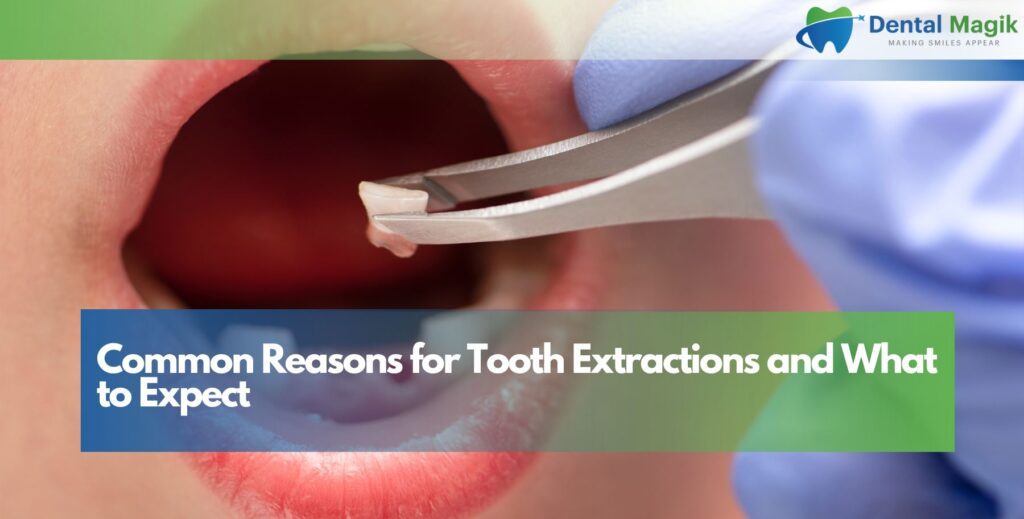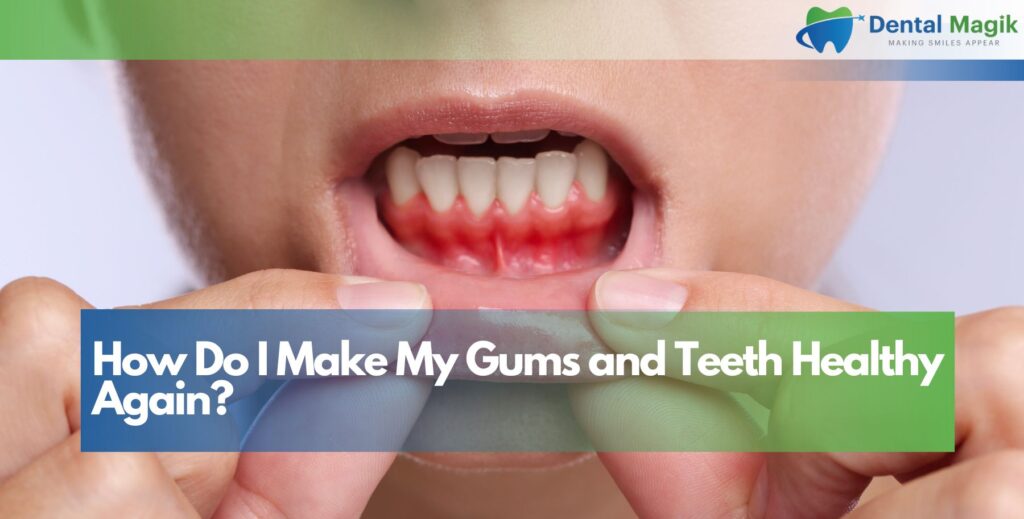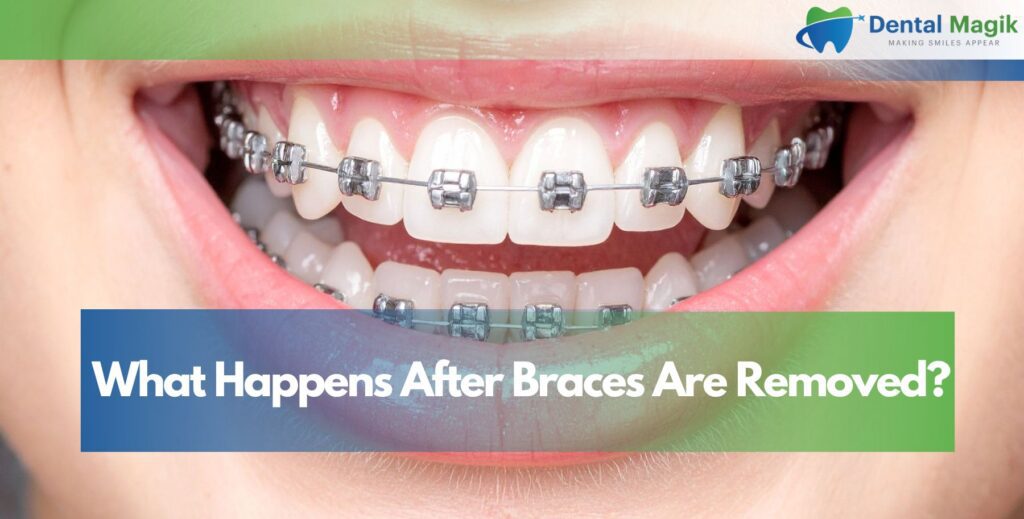Tooth extractions are one of the most common dental procedures, but many people still feel anxious when they hear the term. A tooth extraction is the process of removing a tooth from its socket due to damage, infection, crowding, or other dental issues. Understanding the reasons for tooth extraction, the procedure itself, and recovery can ease anxiety and help patients prepare for the best outcome.
Table of Contents
Why Tooth Extractions Are Necessary
Tooth extractions are usually recommended when a tooth cannot be saved with treatments like fillings, root canals, or crowns. Dentists in the U.S. often recommend extractions to prevent the spread of infection, relieve pain, or prepare the mouth for orthodontics. Leaving damaged teeth untreated can lead to gum disease, jawbone issues, and overall health risks, making extractions an important step in maintaining oral health.
Severe Tooth Decay and Cavities
When decay penetrates deep into the pulp and structure of a tooth, saving it becomes difficult. If a filling or root canal cannot restore function, extraction may be the only solution. Dentists remove the decayed tooth to protect neighboring teeth and prevent abscess formation. Severe decay is one of the leading causes of tooth loss worldwide.
Advanced Gum Disease
Gum disease, also known as periodontal disease, affects the gums and bone supporting the teeth. In advanced stages, it weakens the foundation of teeth, causing them to loosen. If scaling, root planing, or surgery cannot restore stability, extraction may be necessary. Removing compromised teeth helps stop infection and allows the gums and jawbone to heal properly.
Impacted Wisdom Teeth
Wisdom teeth are the last molars to emerge and often lack sufficient space in the jaw. Impacted wisdom teeth can cause pain, swelling, infections, and misalignment of other teeth. Oral surgeons frequently perform extractions for these teeth to prevent complications. Many young adults undergo wisdom tooth removal as a preventive measure.
Tooth Fractures and Trauma
Accidents, sports injuries, or biting down on hard foods can cause severe tooth fractures. If a crack extends into the root, the tooth cannot be repaired with a crown or bonding. Extraction prevents further pain and infection, making way for replacements like implants, bridges, or dentures to restore function and aesthetics.
Overcrowding and Orthodontic Needs
Orthodontists often recommend extractions when there isn’t enough space in the jaw for proper alignment. Removing one or more teeth creates room for braces or aligners to shift teeth into healthier positions. This is especially common in teenagers and young adults preparing for orthodontic treatment.
What to Expect During a Tooth Extraction
Knowing what happens during a tooth extraction procedure can reduce stress and help patients feel prepared. The process typically involves examination, anesthesia, extraction, and aftercare instructions. Dentists ensure comfort and safety, tailoring the approach based on whether it’s a simple or surgical extraction.
Initial Consultation and X-Rays
Before extraction, your dentist performs an oral examination and takes X-rays to assess the tooth’s position and condition. X-rays help identify issues like impacted roots, infections, or bone density. This step ensures a personalized treatment plan and avoids surprises during the procedure.
Types of Extractions: Simple vs. Surgical
A simple extraction removes visible teeth above the gumline using forceps. A surgical extraction is more complex, involving incisions in the gum to access impacted or broken teeth. Surgical procedures are common for wisdom teeth. Both types are performed under local anesthesia or sedation, depending on the complexity and patient comfort.
Anesthesia and Sedation Options
Dentists use anesthesia to ensure a pain-free experience. Local anesthesia numbs the area, while sedation options like nitrous oxide (laughing gas) or IV sedation provide deeper relaxation. For surgical extractions, general anesthesia may be used. Discussing options with your dentist helps you choose the level of comfort best suited for your needs.
The Extraction Procedure Step-by-Step
During extraction, the dentist loosens the tooth with instruments before carefully removing it from the socket. In surgical cases, an incision is made, and the tooth may be sectioned into smaller pieces for easier removal. Gauze is placed afterward to control bleeding. The entire process usually takes between 20 and 60 minutes.
Recovery After Tooth Extraction
Recovery plays a vital role in ensuring proper healing and avoiding complications. Most patients experience mild discomfort, swelling, or bleeding for a few days after extraction, which can be managed with medication and home care. Healing times vary based on the complexity of the procedure and overall oral health.
Pain Management and Medications
Over-the-counter medications like ibuprofen or acetaminophen are commonly recommended to control discomfort. In some cases, dentists may prescribe stronger pain relievers. Applying ice packs intermittently during the first 24 hours helps reduce swelling. Pain typically improves significantly after the first three days of recovery.
Eating and Drinking Guidelines
For the first 24 hours, stick to soft foods like yogurt, applesauce, or soup. Avoid hot, spicy, or crunchy foods that could irritate the socket. Drinking water is encouraged, but avoid straws, as suction can dislodge the blood clot and cause dry socket, a painful complication.
Oral Hygiene During Healing
Gentle oral hygiene is crucial after an extraction. Avoid brushing directly on the extraction site for the first 24 hours. Afterward, brush carefully and rinse with warm saltwater to keep the area clean. Avoid commercial mouthwashes unless recommended by your dentist. Good hygiene prevents infections and speeds healing.
When to Call Your Dentist
Patients should contact their dentist if they experience excessive bleeding, severe pain after three days, pus discharge, or fever. These may indicate complications like infection or dry socket. Early intervention ensures proper healing and avoids more serious health risks.
Long-Term Outlook After Tooth Extraction
The long-term outlook for patients after extractions depends on proper care and replacement options. While extraction solves immediate problems, missing teeth can impact chewing, speech, and facial structure. Restorative treatments like dental implants, bridges, or dentures help restore function and aesthetics.
Dental Implants as a Replacement Option
Dental implants are the gold standard for tooth replacement. They replace the tooth root with a titanium post and a crown, offering durability and a natural look. Implants prevent bone loss and last for decades with proper care. Many dentists recommend them after extractions for long-term oral health.
Bridges and Partial Dentures
For patients not suited for implants, bridges and dentures are effective alternatives. Bridges use adjacent teeth as support, while partial dentures are removable appliances. These options restore chewing and prevent neighboring teeth from shifting into empty spaces.
Preventing Future Extractions
Regular dental checkups, good oral hygiene, and preventive care reduce the likelihood of needing future extractions. Brushing, flossing, fluoride treatments, and avoiding harmful habits like smoking protect both natural teeth and dental restorations.
Conclusion
Tooth extractions may sound intimidating, but they are often the best solution for pain relief, infection prevention, and long-term oral health. Whether caused by decay, gum disease, trauma, or overcrowding, extractions pave the way for healthier smiles and better quality of life. For professional care and personalized guidance, consult a trusted Dentist in East Brunswick, NJ.
FAQs
How painful is a tooth extraction?
With modern anesthesia, the procedure itself is not painful. Mild discomfort afterward is normal and manageable with medication.
How long does it take to recover from a tooth extraction?
Most people recover within 7–10 days, though surgical extractions may take a bit longer to fully heal.
What foods can I eat after a tooth extraction?
Soft foods like yogurt, mashed potatoes, scrambled eggs, and smoothies are recommended in the first few days.
What should I avoid after a tooth extraction?
Avoid straws, smoking, alcohol, and hard or spicy foods, as they can irritate the healing site or cause dry socket.
Do all wisdom teeth need to be removed?
Not always. Only impacted or problematic wisdom teeth that cause pain, infection, or misalignment require extraction.
Can I replace my tooth immediately after an extraction?
In some cases, dentists offer immediate implant placement. However, most require a few months of healing before placing replacements.
How do I know if I have dry socket?
Severe pain 2–4 days after extraction, bad breath, or an empty-looking socket are signs of dry socket. Seek immediate dental care.
Is tooth extraction safe?
Yes, tooth extractions are safe and routine when performed by a licensed dentist or oral surgeon. Complications are rare with proper care.







